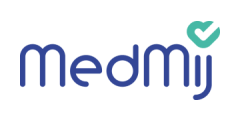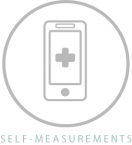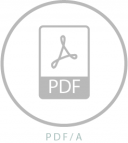MedMij:V2017.01 FHIR IG: verschil tussen versies
k Tekst vervangen - "{{#customtitle:" door "{{DISPLAYTITLE:" |
|||
| Regel 1: | Regel 1: | ||
{{ | {{DISPLAYTITLE:MedMij FHIR Implementation Guide, version 2017.01}} | ||
{{IssueBox|A newer version is available, see https://informatiestandaarden.nictiz.nl/wiki/MedMij:Vcurrent_FHIR_IG}} | {{IssueBox|A newer version is available, see https://informatiestandaarden.nictiz.nl/wiki/MedMij:Vcurrent_FHIR_IG}} | ||
Huidige versie van 20 jul 2020 om 01:12
|
A newer version is available, see https://informatiestandaarden.nictiz.nl/wiki/MedMij:Vcurrent_FHIR_IG |


About the IG
This is the technical MedMij FHIR implementation guide based on HL7® FHIR® version STU3.
Purpose
An implementation guide for making use of FHIR in the Dutch context. This guide is developed specifically for use of FHIR in personal health environments. Vendors of personal health environments that participate in MedMij conform to a framework of agreements. FHIR plays an important role among those agreements and is used as a standard to exchange health information between the involved parties. The purpose of this guide is to describe use cases and provide technical guidance on how FHIR should be implemented in these situations. The FHIR building blocks, or profiles, involved in these use cases are outlined in this guide. Moreover, this guides provides more textual explanation of these building blocks and describes their relationship and boundaries.
Scope
The scope of this guide includes requirements to enable a particular implementation of Electronic Health Record Systems and Personal Health Environments in the Dutch realm to use standardized structured data in a defined inter-organizational transaction. Health is a very broad domain. Therefore, MedMij has made scoping choices for its roadmap. MedMij starts with a limited number of medical subdomains, but has the vision to elaborate into more domains later. However, MedMij does not do everything at once (“think big, act small”). The subdomains in scope for the current implementation guide of MedMij are:
- Patient Administration Resources
- Patient Summary (BgZ)
- Medication
- Laboratory results
- Self-measurements
The FHIR profiles created based on the Dutch Patient Summary, or BgZ (see background for more information), can be used more broadly than only exchanging a patient's summary.
Background
MedMij aims to stimulate electronic information exchange between patients and caregivers. Caregivers generally have access to software applications to help them support their work in treating patients. Software applications for patients are evolving as we speak, but patients typically are not yet enabled to be regarded as a true partner in the care process. MedMij delivers an agreements scheme, in order to enable patients to become that true partner.
Information standards have a functional and technical component. The functional part contains definitions of appropriate concepts (dataset) and scenario’s that define when to exchange which of those concepts. MedMij will not create new functional components of information standards. The technical part translates the functional scenario’s in an exchange format (such as HL7v3 or FHIR). MedMij does make it possible to use a new exchange format: FHIR.
A different program, named ‘Registratie aan de bron’ (Data capture at the point of Care), has defined Health and Care Information models (zorginformatiebouwstenen or ZIB's) for The Netherlands. ZIB's contain definitions of healthcare concepts. Next to these ZIB's, the program ‘Registratie aan de bron’ also made a selection of these ZIB's into the so called ‘Basisgegevensset Zorg’ (Common Clinical Dataset, a Dutch version of a ‘patient summary’, further referred to as ‘BgZ’). The BgZ serves as a minimal healthcare dataset that is always appropriate for caregivers in order to provide continuity of care for a patient.
MedMij uses the BgZ as the starting point for the functional part of the information standards that are part of MedMij. This means that every MedMij information standard is mapped to ZIB's, which are also in scope of BgZ. The BgZ does not always use the complete ZIB. MedMij information standards, however, will use the full ZIB, so as to enable context-free implementation. This enables interoperability for health information.
The stakeholders in MedMij have chosen to introduce FHIR as a modern standard to exchange information in MedMij. MedMij delivers a FHIR representation for each domain in #Scope. However, as noted before, already implemented standards may be part of MedMij as well. Just like the already implemented standards, FHIR is mapped to the ZIB's.
Audience
The target audience of this implementation guide are software vendors and developers that will implement FHIR as part of electronic information exchange under MedMij. Users of this guide are expected to be familiar with the FHIR specification and resource processing. This implementation guide is not intended to be a tutorial on that subject.
Language
This implementation guide is written in English, even though the majority of the documentation in MedMij is in Dutch. A Dutch translation of this document may become available, however, the English version is and remains leading. The rationale for choosing English is described in this section.
Implementers in healthcare are in many cases foreign, e.g. through outsourcing or because the company is a multinational. But even if they are Dutch native speakers, the educational tracks, their programming language of choice, and the implementer communities they are part of will largely be based on the English language. In creating the documentation for this target audience we have received overwhelming preference from the MedMij implementer community for English. This saves them investments and risks in getting a translation agency on a per vendor basis for each version of the documentation, while at same time not alienating the native Dutch speaking audience. As a side effect it also helps Nictiz in the international realm in discussions with relevant initiatives such as Argonaut (US), Patients Know Best (UK), the Finnish PHR, and the HL7/FHIR community at large.
Use Cases
Functional explanation of MedMij use cases are described in more detail here (Dutch). This IG will narrow down to the technical FHIR implementation guidance of these use cases. From here you can link to a specific use case. This current publication contains only the BgZ use case.

|

|

|

|

|
|---|
Profiles
Resources are the building blocks of FHIR. Profiles represent customized versions of these building block with constraints or extensions or both. These profiles are a group of FHIR Structure Definitions, Value Sets and examples that are defined for a certain context or use case. MedMij created profiles for the Dutch context. The goal of these profiles is to enable standardized information exchange in a broader context than MedMij.
The amount of profiles is substantial because of the broad scope of use cases and underlying needed building blocks. For overview purposes, these profiles can be categorized into the following categories.
Patient Administration Resources
This group of profiles cover the demographic and administrative data used to describe patients, persons, service delivery locations, including healthcare providers, places, organizations, and their relationships in the context of healthcare encounters. They form the base of clinical use cases.
These profiles are published and governed by HL7 Netherlands. The naming is marked slightly different in the name (nl-core-*), the canonical url (http://fhir.nl/*) and their publisher (HL7 Netherlands). These profiles are based on the functional ZIBs created by another program called 'Registratie aan de Bron', see the background section for more information. Mappings to the related ZIBs are included in the profiles.
Profiles: HL7 NL administrative resources
Patient Summary
The Basisgegevensset Zorg 1.0(BgZ) covers a subsection of selected information concepts within 26 ZIBs of the 2015 release. The BgZ can be seen as representation of a patient summary. MedMij created FHIR profiles that represent these 26 ZIBs completely, if no existing and usable profiles were available. The profiles represent their entire respective ZIB, to make them applicable in a broader context than a patient summary or a MedMij context. An example for reuse of existing profiles are those of the patient administration resources and vital signs, which will be described in more detail below.
Profiles:Patient Summary / BgZ
Medication Process
The parallel running program called 'Medicationprocess’ created medication clinical building blocks. In 2017, Registration aan de Bon published ZIBs that are derived from these building blocks. The 2015 version of the medication ZIBs was insufficiently developed. The profiles created for all medication building blocks are therefore based on the 2017 ZIB version instead of the 2015 version.
Profiles:Medication Process
Vital Signs / Self-Measurements
The BgZ includes blood pressure, body height and body weight as vital signs. For this purpose, MedMij uses the official HL7 profiles designed and published for vital signs. HL7 designed these profiles because vital signs is one of the first areas where there is a need for a single, global vocabulary to allow for ubiquitous access and re-use. Moreover, vital sign information is increasingly used in wearables by patients where they want to/need to share information from those devices. MedMij uses all the vital signs profiles published by HL7 that have a corresponding ZIB.
Profiles:Vital Signs / Self-Measurements
Contact
MedMij
E: standaarden@medmij.nl
Nictiz
T: +31-70 317 3450
FHIR Discussions
chat.fhir.org
Release Notes
| Version | Date | Notes |
|---|---|---|
| 2017.01 | 2017-10-02 | Initial version containing Patient Administration Resources, Patient Summary (BgZ), |